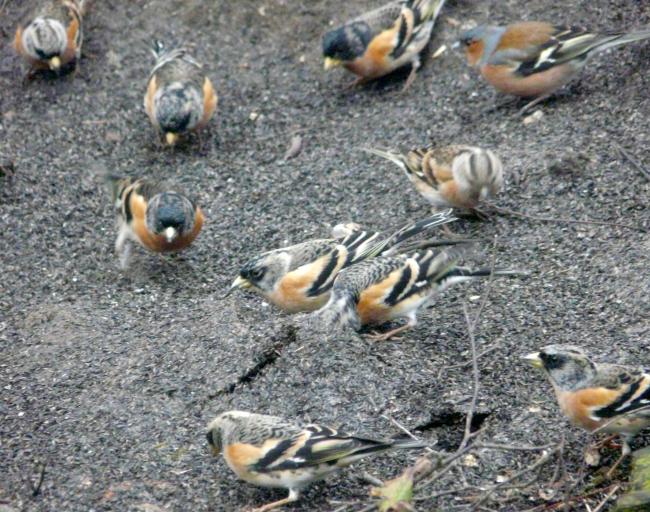The early morning sunshine lifted the spirits, if not the temperature, but it certainly gave the reserve a much missed brighter appearance as evidenced by the view across the settlement pond.
The recently arrived male chiffchaff were taking the opportunity to carve out their summer territories, for the breeding season ahead, by declaring their ownership and availability to passing females, in song. With the recent cold weather and lack of obvious insects it’s difficult to understand what they may otherwise have found to sing about. Nevertheless there were several singing males including this one alongside the path near the Woodland Hide.
The spring-like nature of the day prompted us to contemplate giving a couple of the hides a tidy-up so we set out for the Lapwing hide armed with brushes,to sweep out the accumulated detritus of the winter. Slightly disappointed to not see the black-necked grebe that have been viewed from there recently, although a few visitors reported seeing them there later on. We did see a pair of goldeneye, albeit just a little distant for a decent picture with my modest camera. On the plus side this image of the drake in sunshine, clearly shows how they acquired their name, a feature not always that obvious.
Given the time of year, with anticipation of the arrival of summer migrants, a glimpse of activity atop the newly installed osprey platform, proved, unfortunately, to be just a black-headed gull using it as a vantage point.
Whilst on the subject of summer migrants, we have had, over the last couple of weeks, a fair number of sand martins hawking over the lakes. Sadly the numbers seem to have been reducing and today we couldn’t find any. This may be because they were only passing through on their way further north, or they have succumbed to the low temperatures and the lack insect food.
On a brighter note the decoration of the reserve with bright yellow flowers of celandine and coltsfoot was a delight to see.









































